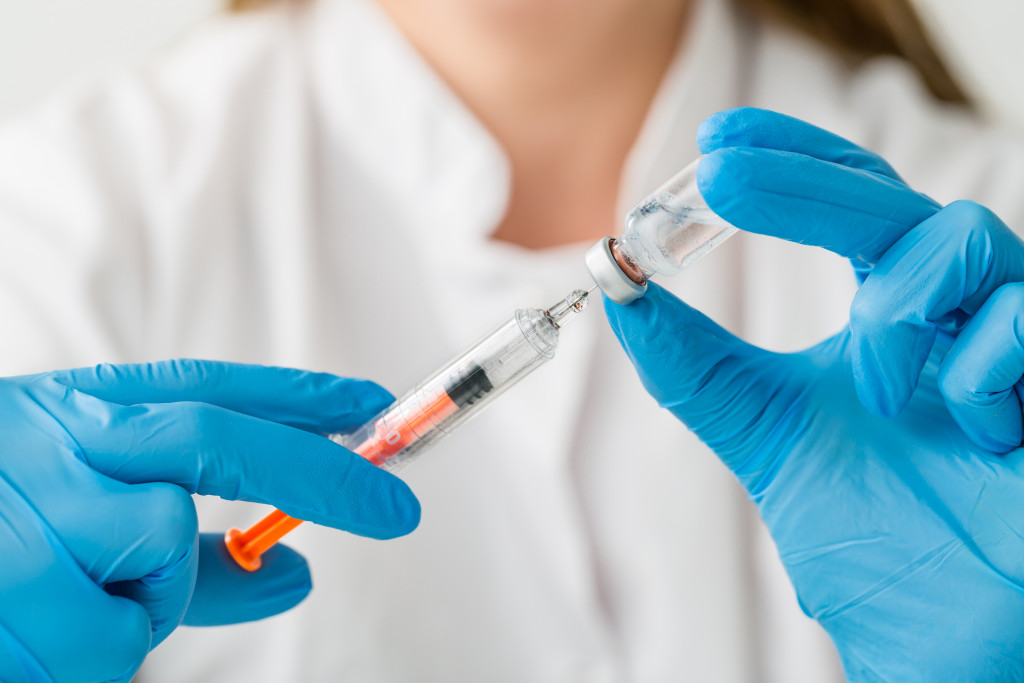When the health crisis started, people did not expect it to spread as fast as it did. Within months, the virus reached different countries around the world. It infected millions, and it upended the lives of everyone. It brought the world to a standstill.
The situation compelled the public and private sectors to develop a vaccine to stop the virus. By December 11, 2020, the US Food and Drug Administration (FDA) issued an emergency use authorization for the Pfizer-BioNTech COVID-19 vaccine. The same vaccine also received full approval from the government agency nearly a year later.
Even as the other vaccines also receive full approval in the coming months, some people are still amazed at the pace of development of the vaccines. Innovative technologies and previous research contributed a lot to the rapid pace of the development of vaccines.
Previously, the mumps vaccine was the fastest vaccine ever developed at four years. But with some of the groundwork for the development of the Covid-19 vaccine completed years ago, pharmaceutical companies were able to finish the development in record time.
Modern Tools and Technology Used
Previous vaccine developers did not have the innovative technologies available today. Researchers who worked on the Covid-19 vaccine used the latest equipment after receiving funding from the public and private sectors. For instance, the dissolution apparatus enhanced the efficiency of the vaccine development process. Used by the majority of pharmaceutical companies, the equipment provided a cost-effective way of developing drugs.
Researchers also had access to CRISPR, a gene-editing tool that allowed them to program exact genetic sequences. They also used cryo-EM or cryogenic electron microscopy to study viruses and design vaccines to deal with the viruses. Loop-mediated isothermal amplification or LAMP also allowed researchers to copy genetic material faster than the technology used in the past.
The use of messenger RNA or mRNA also allowed researchers to create blueprints that coaxed cells to produce therapeutic proteins that make viral proteins necessary for vaccination. Two mRNA vaccines are currently being used in the US today.
Previous Research
Aside from innovative tools and technology, researchers also used previous research to develop vaccines against the novel coronavirus. Studies were already made on other coronaviruses that emerged years ago. These viruses caused severe acute respiratory syndrome or SARS and the Middle East respiratory syndrome or MERS.
Using the results of these studies helped researchers develop the different types of vaccines currently available to millions of people worldwide. The first two vaccines that received approval used mRNA inside a lipid coat. Research for these types of vaccines started decades ago, and it matured at the right time. This allowed Pfizer, BioNTech, and Moderna researchers to use the technology to develop the first two vaccines quickly.
On the other hand, the third vaccine from AstraZeneca uses a viral vector to hold the genetic material used to code the SARS-CoV-2 spike protein. This vaccine development technique also benefitted from previous research involving MERS, SARS, malaria, and Ebola.
So, the development of the vaccine did not start when the virus was first detected in Wuhan, China, in December 2019.

Well-Funded Research
Aside from previous research, the development of the vaccine also received a good amount of funding from the private and public sectors. Vaccine developers received billions of dollars of funding through Operation Warp Speed of the US government. Even as a considerable amount went to the manufacturing side of the process, funding was also earmarked to fast-track the development of the vaccine.
The funding allowed companies to take risks that they do not normally do with limited finances. It allowed them to perform parallel trials instead of performing the phases sequentially. Additionally, the funding gave companies the confidence to conduct large-scale trials and manufacturing without being anxious about losing money during the process.
Aside from seeing the need to end the pandemic, companies also saw the situation as the chance to receive funding to perform research and development.
Support and Coordination
The rapid pace of development of the vaccine also benefitted from the support and coordination being private and public sector groups. Established in 2017, the Coalition for Epidemic Preparedness Innovations (CEPI) is a foundation focused on the blueprint priority diseases of the World Health Organization.
The organization aimed to create the infrastructure necessary for the affordable and rapid development of vaccines. It provided partial funding for the development of the vaccines and was instrumental in helping companies in developing vaccines in different parts of the world.
Even as the world continues to fight the pandemic, the rapid development of the vaccine provides hope that life will go back to normal soon.




